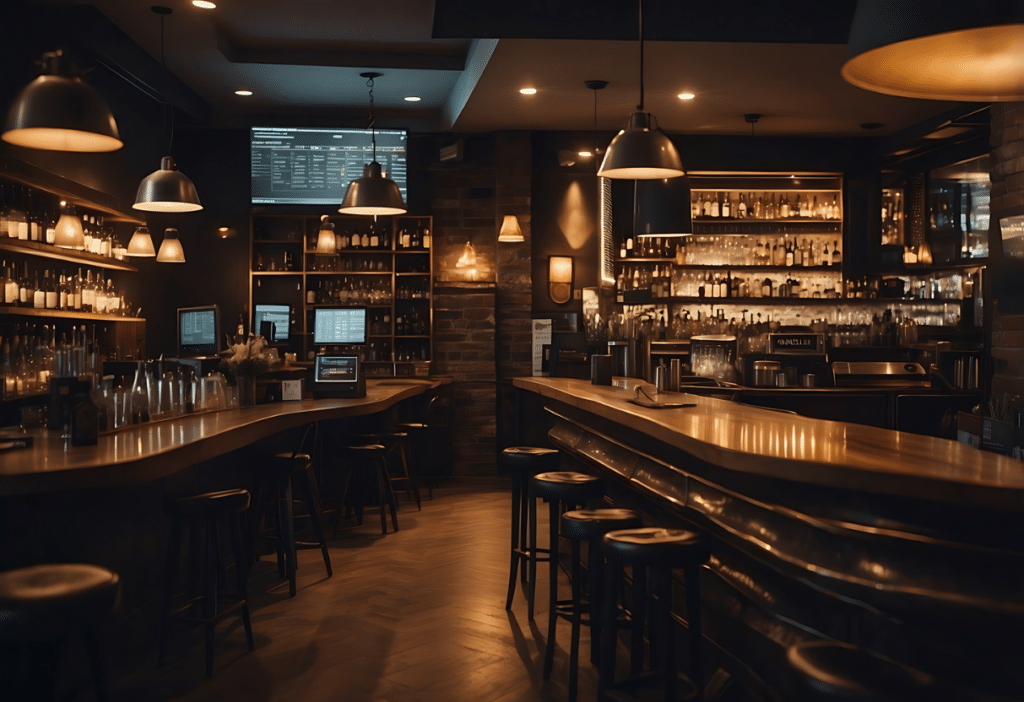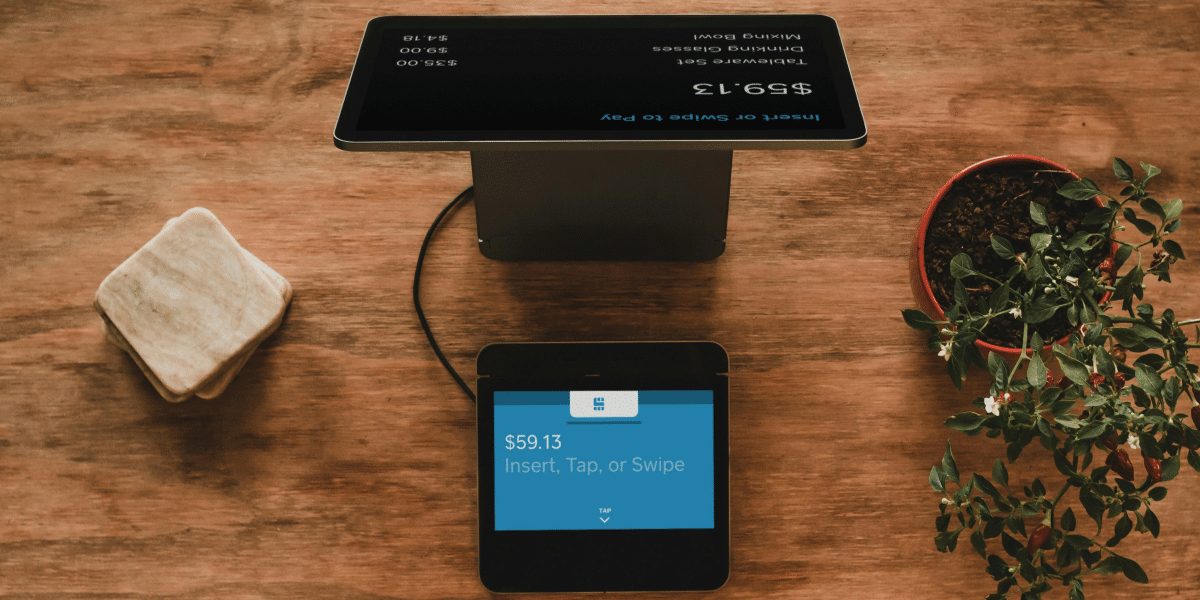By: PR Fueled
If you’re running a bar, a point of sale (POS) system is essential to keep everything running smoothly.
With Bartenderpos.com, you can efficiently track profits, inventory, and employees. You can also handle online ordering and phone food orders.
Having a reliable POS system helps you manage your bar with ease. At Bartenderpos.com, you can get a free custom quote tailored to your needs. These systems can drastically improve your bar’s operational efficiency.
Not only does Bartenderpos.com offer a robust POS system, but they also provide digital signage to make your bar or pub stand out and drive up sales. Investing in a comprehensive POS system can be a game-changer for your business.
Key Takeaways
- Efficiently track profits, inventory, and employees with Bartenderpos.com.
- Free custom quotes are available to tailor the POS system to your needs.
- Digital signage is available to enhance bar visibility and sales.
Understanding POS Systems for Bars
Bar POS systems comprise several core components, have evolved significantly over time, and offer numerous benefits in bar management. Let’s explore these aspects to understand their importance and functionalities.
Core Components of a Bar POS
A bar POS system includes hardware and software elements. The hardware often consists of touchscreens, cash drawers, receipt printers, and credit card readers, which ensure fast and efficient service.
The software is crucial for managing orders, tracking sales, and monitoring inventory. Efficient POS software provides real-time data on stock levels, helping avoid shortages or overstocking. This integration of hardware and software enhances control and efficiency in bar operations.
The Evolution of POS Technology
POS systems have evolved from basic cash registers to advanced digital platforms. Initially, they were standalone machines with limited capabilities. Today, they offer cloud-based solutions, mobile compatibility, and integration with other business tools.
Modern POS systems support advanced functionalities such as online ordering, employee management, and customer loyalty programs. These improvements have transformed bar management, making businesses more adaptable and customer-focused.
Benefits of POS Systems in Bar Management
Implementing a POS system in a bar offers several key advantages. It enhances efficiency by speeding up transaction times and reducing errors. Accurate record-keeping helps in tracking profits and losses meticulously.
POS systems also improve inventory management, providing insights into stock usage and helping in timely restocking. Additionally, they facilitate better employee management by tracking work hours and performance. These benefits collectively contribute to a potentially more profitable and scalable bar business.

Optimizing Bar Operations
Optimizing bar operations involves improving order management, enhancing customer service, and tracking employee performance. These areas are crucial to increasing efficiency, customer satisfaction, and profit margins.
Streamlining Order Management
Efficient order management is crucial. I use a point-of-sale system to manage and track orders swiftly. It integrates online and phone orders, reducing errors and accurately fulfilling orders.
Automated inventory tracking helps me monitor stock levels in real time. This prevents stockouts and ensures everything needed for service is available. With inventory alerts, I avoid running out of popular items, maintaining service quality.
Creating preset menu buttons for popular items speeds up transactions. This allows bartenders to process orders quickly, reducing wait times and improving service speed.
Enhancing Customer Service
Good customer service is a cornerstone. I focus on quick and friendly interactions. Training bartenders in customer engagement is essential. Friendly greetings and personalized service improve customer satisfaction.
Using digital signage, I display promotions and special offers vividly. This catches customers’ attention, increasing the likelihood of additional purchases. Clear communication through signage also enhances the customer’s experience.
I implement loyalty programs to reward regular patrons. Offering discounts or free items for repeat visits encourages return business, which increases sales and builds a loyal customer base.
Employee Performance Tracking
Tracking employee performance helps me identify strengths and areas for improvement. I use the point-of-sale system to monitor sales data and who performs well. This data-driven insight assists in recognizing top performers and providing appropriate incentives.
Regular feedback sessions with staff are essential. Constructive feedback and recognition boost morale and performance, and addressing any issues promptly helps maintain high service standards.
Setting clear performance goals and expectations is essential. I communicate these to my team and provide them with the necessary training and resources. This ensures everyone is aligned and working towards the bar’s success.
Advanced Inventory Management
Effective inventory management is crucial for bar owners. Bar management can become more efficient and profitable by focusing on real-time tracking techniques and minimizing inventory errors.
Real-Time Tracking Techniques
Using real-time inventory tracking methods, I can monitor stock levels instantly. This allows me to identify when items need restocking and avoid shortages quickly. Implementing automated systems can significantly enhance accuracy and efficiency.
I use barcode scanning and RFID tags to track my inventory precisely. With cloud-based software, I can access inventory data from anywhere, ensuring I always have up-to-date information. This allows for better decision-making about inventory purchases.
Reducing Inventory Errors
Reducing inventory errors is essential to maintain accurate stock levels and avoid unnecessary costs. I utilize digital systems to reduce manual errors that occur during stocktaking. Automated solutions help ensure each inventory transaction is recorded accurately.
Integrating my point-of-sale (POS) system with inventory management software helps maintain consistency between sales and stock levels. I also conduct regular audits and cross-checks to identify and rectify discrepancies promptly. These practices can reduce waste and improve overall profitability.

Financial Aspects and Reporting
Managing financial aspects and generating detailed reports are key strengths of bartenderpos.com. They ensure that you have precise and actionable data to drive your business forward.
Analyzing Sales and Performance
I can easily monitor the sales performance of my bar with bartenderpos.com. The system provides detailed reports on daily, weekly, and monthly sales, allowing me to identify trends and make informed decisions.
I can spot popular drinks, peak hours, and improvement areas with these insights. Accurate performance analysis enables me to adjust pricing, promotions, and staffing for maximum efficiency. Real-time data ensures I respond swiftly to any changes in sales dynamics.
Integration with Accounting Systems
Bartenderpos.com integrates seamlessly with existing accounting systems. This allows me to synchronize financial data effortlessly, reducing errors and saving time.
The POS system supports integration with leading accounting software such as QuickBooks, Xero, and Sage. This interoperability ensures that all transactions and financial records are accurately maintained. Automated data syncing streamlines financial management and keeps my accounting books up-to-date, enhancing financial transparency and control.
Marketing and Customer Relations
Effective marketing and strong customer relations are vital for the success of any bar. You can foster customer loyalty and drive up sales by implementing loyalty programs, personalized marketing strategies, and managing customer relationships.
Implementing Loyalty Programs
Loyalty programs can be a game-changer for bars. By offering rewards and incentives, you can encourage repeat business.
For instance, a points-based system where customers earn points for every dollar spent can result in free drinks or discounts.
I also recommend setting up a referral program. Offering discounts or bonuses to customers who refer new patrons can expand your customer base. Bartenderpos.com’s features make tracking these programs easy, as they effortlessly manage and monitor customer activity.
Personalized Marketing Strategies
Personalized marketing strategies help create a more engaging and relevant experience for each customer. By using data from past purchases and preferences, you can tailor your promotions and communication.
For example, sending a special offer on a customer’s favorite drink on their birthday can make them feel valued.
Email newsletters and targeted advertisements based on customer data can bring more foot traffic and online orders. bartenderpos.com can assist in gathering and analyzing this data effectively.
Managing Customer Relationships
Good Customer Relationship Management (CRM) is essential in maintaining a positive rapport with your patrons.
Keeping detailed records of customer preferences, feedback, and visits helps provide personalized and superior service. bartenderpos.com’s CRM tools allow you to manage these records seamlessly.
Responding promptly to customer inquiries and complaints can foster trust and satisfaction. Building a solid customer relationship can increase loyalty and word-of-mouth referrals, which are invaluable for any bar.
Choosing the Right POS Solution
Choosing the right POS solution involves considering key features, compatibility with your business size and type, and available vendor support and software updates.
Key Features to Look For
When evaluating POS systems for your bar, there are several must-have features to consider.
- Inventory management is crucial; it helps you keep track of stock levels and manage orders efficiently.
- A user-friendly interface ensures your staff can quickly learn and use the system, minimizing downtime.
- Reliable payment processing options are essential, including multiple payment methods such as credit cards and mobile payments.
- Reporting and analytics tools provide insightful sales, inventory, and employee performance data, helping you make informed decisions.
- Features like integration with online ordering platforms and customer loyalty programs can also enhance the customer experience and drive repeat business.
Compatibility with Business Size and Type
The size and type of your bar influence the right POS solution for you.
A simple system with essential features like sales tracking and basic inventory management may suffice for a small bar. More advanced systems with multi-location support and detailed analytics might be necessary for larger establishments.
Consider whether the system can handle peak hours efficiently without crashing. Bars and pubs require reliable systems to manage high volumes of transactions seamlessly. It’s also essential to ensure that the POS system can adapt to your business needs, whether you offer table service, counter service, or a mix.
Vendor Support and Software Updates
Strong vendor support is crucial for the longevity and efficiency of your POS system.
Look for vendors that offer 24/7 support to address any issues promptly, minimizing downtime. Training for your staff can also be beneficial, making the transition to a new POS system smoother.
Regular software updates are essential to keep your system secure and up-to-date with the latest features.
Ensure the vendor provides consistent updates and maintenance. Vendor reliability is critical; choose a provider known for robust and dependable support to keep your operations running smoothly without hiccups.
Technical Considerations
When adopting a bar POS system, it’s essential to think about hardware and software requirements, security, and how to troubleshoot potential errors. These aspects ensure the system runs smoothly and securely, enhancing overall efficiency.
Hardware and Software Requirements
A reliable bar POS system requires specific hardware to operate effectively. Essential components include touchscreen monitors, receipt printers, and a barcode scanner for quick transactions.
The POS Hardware needs to be robust enough to handle the fast-paced environment of a bar.
Software must be compatible with your existing systems and support various functionalities like inventory tracking and employee management.
The setup process should be straightforward, with clear configuration steps. POS software should be updated regularly to include new features and security patches.
Security and Data Protection
Security is critical in a POS system. It must include advanced security features such as encryption and tokenization to protect sensitive customer data during transactions.
Implementing role-based access control ensures that only authorized employees can access specific system functions.
Update your system regularly to guard against vulnerabilities and perform security audits. Data protection policies should also be in place to manage and safeguard customer and employee information.
Investigating the data protection measures and compliance with standards like PCI DSS is crucial for maintaining trust and security.
Dealing with Troubleshooting and Errors
Encountering issues with a POS system is inevitable. Being prepared for troubleshooting common issues is essential.
These can range from network connectivity problems to software glitches. It’s vital to have a support plan, whether through the POS provider or an in-house IT team.
Develop a step-by-step guide for staff to follow when encountering errors. Detail basic troubleshooting methods, such as restarting the system, checking connections, and ensuring software updates.
Regular maintenance and diagnostics help preemptively address potential problems, keeping the system running efficiently.
Expanding Business with Integrated Features
Introducing integrated features can significantly improve bar operations and potential profitability. These capabilities can streamline processes and create new revenue streams.
Online Ordering and Delivery Services
Online ordering and delivery services are game-changers for bars. I can serve more patrons efficiently by enabling customers to place orders through a dedicated platform. This reduces the pressure on in-house staff and cuts down on wait times.
Delivery services extend the bar’s reach beyond its physical location. This means I can attract customers who prefer to enjoy their favorite cocktails and meals from home.
Incorporating these services also facilitates better inventory management. The system tracks orders in real-time and adjusts stock levels accordingly.
Integration with Other Management Systems
Seamless integration with other management systems is crucial.
Connecting the point-of-sale system with inventory management, employee scheduling, and financial tracking is essential. This allows me to monitor every aspect of my bar’s operations from a single platform.
This approach enhances accuracy and efficiency.
Inventory levels are automatically updated with each sale, reducing the chances of stockouts or overstocking.
Meanwhile, employee schedules can be managed more effectively, ensuring optimal staffing during peak hours.
Additionally, financial insights from integrated systems help me to identify profitable and underperforming areas, allowing for informed decision-making.
With these integrated features, I can streamline operations and focus on delivering exceptional customer experiences.
Published By: Aize Perez
















